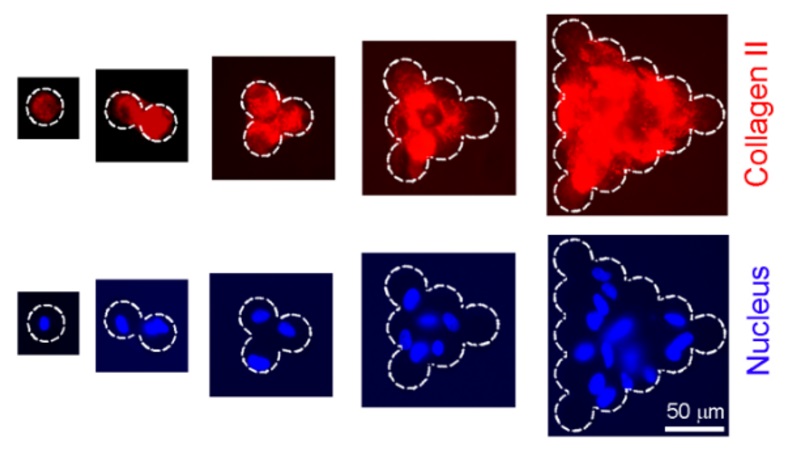 +565 975 658
+565 975 658
 info@premiumcoding.com
info@premiumcoding.com
 Monday - Friday, 8.00 - 20.00
Monday - Friday, 8.00 - 20.00
Due to the nonvascularized and noninnervated nature, an impaired cartilage is hard to self-heal. One of the promising methods to repair cartilage injury is cell-based tissue engineering. The most important type of pertinent seed cells are mesenchymal stem cells (MSCs). To reveal the cues to regulate chondrogenic differentiation of MSCs is thus of much importance.
With the unique micropatterning, Ding’s group fixed other cell geometry cues to study the cell-cell contact effect on chondrogenesis. They found that the extent of the chondrogenic differentiation of MSCs is linearly related to that of cell-cell contacts. The regulation worked both in the hypoxia and normoxia conditions. Hypoxia directly promotes the induction process even under the same cell-cell contact extent.
The paper first-authored by Mr. Cao, a PhD student supervised by Professor Ding was published in Biomaterials. See details:Bin Cao, Zhenhua Li, Rong Peng, Jiandong Ding*, Effects of cell-cell contact and oxygen tension on chondrogenic differentiation of stem cells, Biomaterials, 2015, 64: 21-32. Links:
The upper row shows representative micrographs of cells with collagen II staining after 9-day chondrogenic induction. The lower row is the corresponding images with nucleus staining. The dashed lines indicate the positions of the cell-adhesive microislands. From the left to right, the extent of cell-cell contact was increased.
Get to know us better now!

Wechat:FDUMMers
Search!
Search across our website
Revenant @ 2018 by fudan | All Rights Reserved
Powered by Weicheng

